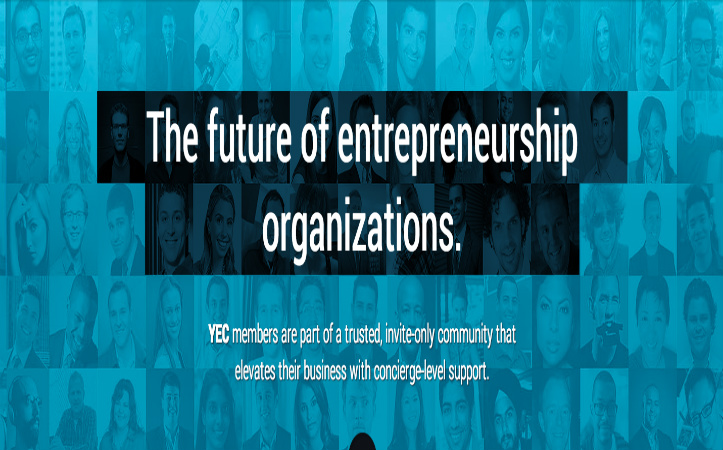What is one cautionary tip for startups that are just starting to put together the “stack” of software they’ll use for operations, from email to task management?
The following answers are provided by members of Young Entrepreneur Council (YEC), an invite-only organization comprised of the world’s most promising young entrepreneurs. In partnership with Citi, YEC recently launched StartupCollective, a free virtual mentorship program that helps millions of entrepreneurs start and grow businesses.
1. Consider Scale
 Finding software for a handful of employees is easy. But how will the systems you put in place scale for future growth? Will the samesoftware work well for 10, 100 or 1,000 employees? Probably not. But knowing certain growth limitations will help you plan now. – Tim McHugh, Saddleback Educational
Finding software for a handful of employees is easy. But how will the systems you put in place scale for future growth? Will the samesoftware work well for 10, 100 or 1,000 employees? Probably not. But knowing certain growth limitations will help you plan now. – Tim McHugh, Saddleback Educational
2. Keep the Bigger Picture in Mind
 When you’re looking for solutions for one part of your business, make sure those solutions will integrate easily with other aspects of the company. If your CRM software doesn’t communicate with your mailing list software, for instance, that’s a fail. Be cognizant of how SaaS systems integrate with other platforms, or you could end up with 10 disparate silos instead of one integrated solution. – Brittany Hodak, ZinePak
When you’re looking for solutions for one part of your business, make sure those solutions will integrate easily with other aspects of the company. If your CRM software doesn’t communicate with your mailing list software, for instance, that’s a fail. Be cognizant of how SaaS systems integrate with other platforms, or you could end up with 10 disparate silos instead of one integrated solution. – Brittany Hodak, ZinePak
3. Understand Your Burn Rate
 Before you take any further steps, make sure you understand your burn rate. This number is how much money you need to keep your business running to a projected future date. There’s no worth in doing anything if you don’t do this. You don’t want to fizzle out in a day, week, month or year. Understanding this number will help you thrive and make any decision, big or small. – Rob Fulton, Automation Heroes
Before you take any further steps, make sure you understand your burn rate. This number is how much money you need to keep your business running to a projected future date. There’s no worth in doing anything if you don’t do this. You don’t want to fizzle out in a day, week, month or year. Understanding this number will help you thrive and make any decision, big or small. – Rob Fulton, Automation Heroes
4. Take Gradual Steps
 Our company has rushed into buying and developing many types of software that was scrapped for another service or project at the end of the year. We did not demo enough products to determine sync capabilities between different devices and services. Now, we’ve created a list of requirements the new software must be able to accomplish, aside from its main form of use. – George Mavromaras, Mavro Inc. | Praetor Global LLC.
Our company has rushed into buying and developing many types of software that was scrapped for another service or project at the end of the year. We did not demo enough products to determine sync capabilities between different devices and services. Now, we’ve created a list of requirements the new software must be able to accomplish, aside from its main form of use. – George Mavromaras, Mavro Inc. | Praetor Global LLC.
5. Don’t Go for the Big Name
 Sometimes the big, familiar name means big costs. Littler guys out there are usually just as good — just make sure you do your research and you know exactly what you need them for. – Brooke Bergman, Allied Business Network Inc.
Sometimes the big, familiar name means big costs. Littler guys out there are usually just as good — just make sure you do your research and you know exactly what you need them for. – Brooke Bergman, Allied Business Network Inc.
6. Use What the Founders Know Best
 Assuming you have a talented tech person on the founding team (like you should), use whatever they know best. If they’re leading the charge and working on it the most, whatever they know best is going to be the quickest and the most effective. Other talented developers will likely know the same languages or can pick them up pretty quickly. – Carlo Cisco, SELECT
Assuming you have a talented tech person on the founding team (like you should), use whatever they know best. If they’re leading the charge and working on it the most, whatever they know best is going to be the quickest and the most effective. Other talented developers will likely know the same languages or can pick them up pretty quickly. – Carlo Cisco, SELECT
7. Understand Your Real Objectives
 Remember, your operational software stack is just a set of tools that you use to allow your business to operate daily. Your tools should help your business objectives and make your team more efficient. If they are getting in the way, then you need to reevaluate your proces or change your tools. – Arian Radmand, CoachUp
Remember, your operational software stack is just a set of tools that you use to allow your business to operate daily. Your tools should help your business objectives and make your team more efficient. If they are getting in the way, then you need to reevaluate your proces or change your tools. – Arian Radmand, CoachUp
8. Take Interoperability Into Account
 Downloading that free piece of software or registering for a free trial can be tempting to new startups. However, after using several different products for several different functions, a company can quickly run into an integration problem. Therefore, you should consider how all of the software is going to work together to accomplish important company tasks up front. – Mark Cenicola, BannerView.com
Downloading that free piece of software or registering for a free trial can be tempting to new startups. However, after using several different products for several different functions, a company can quickly run into an integration problem. Therefore, you should consider how all of the software is going to work together to accomplish important company tasks up front. – Mark Cenicola, BannerView.com
9. Pay Attention to Portability
 There are lots of tools out there for startups to take advantage of, but sometimes it is hard to tell what will be best for your team’s workflow six months or a year down the line. Because of this, make sure the choices you make now won’t lock you into specific services or workflows in the future. – James Simpson, GoldFire Studios
There are lots of tools out there for startups to take advantage of, but sometimes it is hard to tell what will be best for your team’s workflow six months or a year down the line. Because of this, make sure the choices you make now won’t lock you into specific services or workflows in the future. – James Simpson, GoldFire Studios
10. Understand Your Needs
 Build your processes and determine your needs, then begin utilizing software to streamline and make it more productive. Companies often purchase software and never use it the way it is intended. – Sam Bahreini, VoloForce
Build your processes and determine your needs, then begin utilizing software to streamline and make it more productive. Companies often purchase software and never use it the way it is intended. – Sam Bahreini, VoloForce









